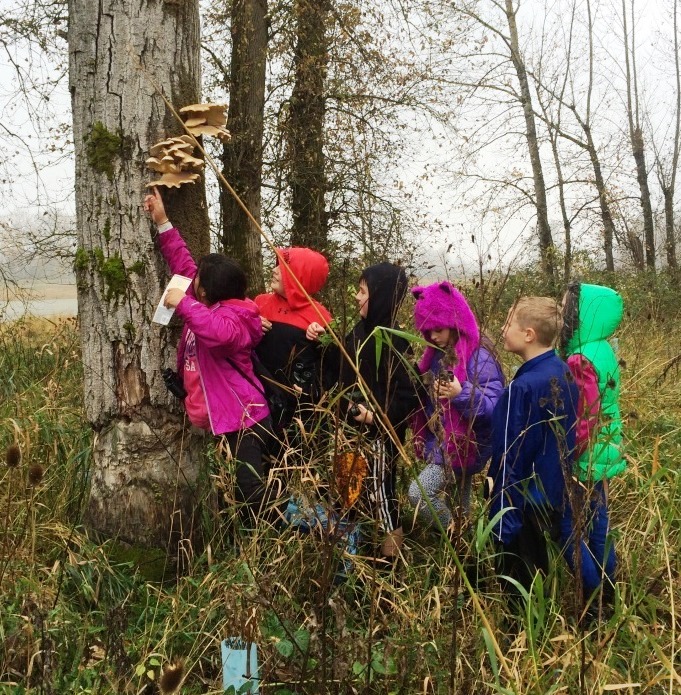 Estuary Partnership educators arrive in classrooms throughout our study area with a very large case. As it unfolds, a river model complete with sand, trees, houses, and flowing water emerges and becomes a laboratory for students. Students play with the model to learn about rivers: how they change over time and the relationships between plants, wildlife, sediment and flowing water. Students of all ages are always happy to get their hands dirty, observing firsthand how trees and buildings affect “river” flows. Next, we take the students outdoors to continue the lesson at a river or natural area near their school.
Estuary Partnership educators arrive in classrooms throughout our study area with a very large case. As it unfolds, a river model complete with sand, trees, houses, and flowing water emerges and becomes a laboratory for students. Students play with the model to learn about rivers: how they change over time and the relationships between plants, wildlife, sediment and flowing water. Students of all ages are always happy to get their hands dirty, observing firsthand how trees and buildings affect “river” flows. Next, we take the students outdoors to continue the lesson at a river or natural area near their school.
Once outdoors students make scientific observations and discover how organisms depend on each other. Students improve wildlife habitat by removing invasive plants or planting new native trees. On a local stream or river, they learn how organisms interact with the physical environment while paddling a 34-foot canoe.
Sustaining our large investments to restore the lower Columbia River requires a key ingredient: a future generation who is well educated in the sciences and understands the natural environment. Unfortunately, schools districts in Oregon and Washington struggle to fund field based learning and many have cut these programs all together. Through support from over 60 public and private entities, the Estuary Partnership Education Program provides over 25,000 hours of instruction each year to approximately 4,500 students.
Since 2000, the Estuary Partnership has filled gaps in science education in schools along the lower Columbia River. We have provided 54,222 students with more than 250,000 hours of instruction in applied science and outdoor learning. Our program is unique: we develop curricula with teachers to meet state education benchmarks and make the Columbia River a living laboratory for students and teachers. The Education Program is comprehensive, bringing a variety of classroom lessons to life outdoors. Typical components include classroom lessons, an outdoor habitat enhancement project, an on-water canoe paddle experience, and a class to reflect on the benefit of their activities.
“The Estuary Partnership brings a wide variety of materials and learning styles to their classroom programs. They are of high interest, high quality, and hands-on,” shared Nancy Fisher, a teacher at Sauvie Island Academy in Portland, OR.
“There is nothing more powerful than taking students to actual sites that contain the plants, animals and water systems that are learned about in the classroom. With limited time and funding available to school districts, this program makes it possible to have a much more meaningful experience,” says teacher Linda DiPietro, McBride Elementary, in St Helens, OR.
“The most popular lessons by far are about animal signs and observations, macroinvertebrates as water quality indicators, food webs, native plants and invasive plants, river table investigation, and the watershed model,” says Jennie Klein, Education Program Manager for the Estuary Partnership.
We focus on financially challenged schools and provide all programs at no cost to school districts, teachers, students, or parents. Teachers share with us that they lack the resources, and are uncomfortable or untrained to lead outdoor lessons. Our programs are popular and fill quickly. We have developed four educational kits that are available to teachers on loan so we can reach more teachers and students in our service area.
We also offer professional development workshops for teachers so they can teach outdoor applied learning. Workshops are specific to a natural area and provide instruction on how to use the site as an outdoor classroom. Field equipment and supplies are available for teachers to borrow to lead their field trips.
We are all connected to the Columbia River in many ways - nature, recreation, the economy, culturally, and so much more. Using the Columbia River as a living laboratory makes it real for students and, we hope, builds connections to it that will last a lifetime.